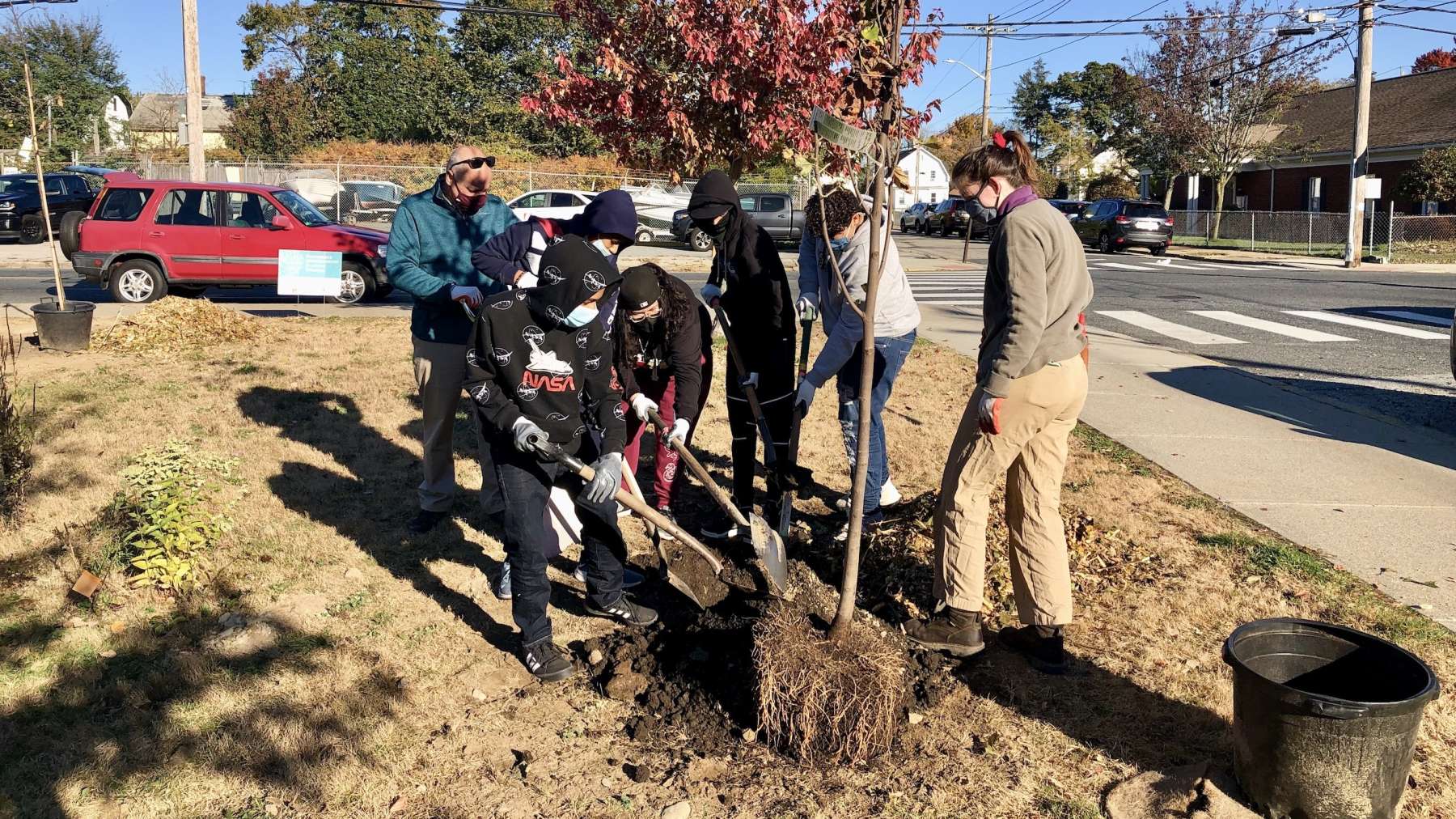PVD Tree Plan Wants to Hear Community Ideas for Tree Equity
“Providence is already experiencing the impacts of climate change, with more excessive heat days and more intense rainstorms. A healthy urban forest is critical living infrastructure that can help our communities adapt to the more extreme weather,” said Kufa Castro, PTP steering committee member and program coordinator at Groundwork Rhode Island.
February 8, 2022, 4:00 pm
By Aaron Regunberg
The coalition of Providence community members, organizations and City partners creating the PVD Tree Plan (PTP) want to hear ideas for tree equity from people who live, work, and play in the city.
The survey at pvdtreeplan.org/survey asks questions about what people appreciate most about our urban trees, what challenges they have, and what the priorities should be in the City’s first comprehensive urban forestry plan. The survey is available in English, Spanish, Vietnamese, Hmong, Swahili, Khmer, Haitian Creole, French, and Portuguese. The survey will be open through Arbor Day, April 29, 2022.
“We need to create a healthy and resilient urban forest that equitably distributes this critical green infrastructure to all residents,” said Cassie Tharinger, executive director of the Providence Neighborhood Planting Program and a member of the project coordination team. “The PVD Tree Plan will be a comprehensive and citywide strategic plan that centers the goals and ideas of the people most impacted by tree inequity.”
“The urban forest is all of the trees on public and private land, and all the living things growing around and underneath them, throughout the entire city. It includes the trees on our streets, in our parks, back yards, parking lots, cemeteries, school yards, and campuses. It’s the ‘weed trees’ growing up through chain link fences in empty lots, and the trees growing in natural areas along rivers and parks. The humans and animals that live in the city are all creatures of the urban forest,” said Tonay Gooday-Ervin, PTP steering committee member and arborist.
“Providence is already experiencing the impacts of climate change, with more excessive heat days and more intense rainstorms. A healthy urban forest is critical living infrastructure that can help our communities adapt to the more extreme weather,” said Kufa Castro, PTP steering committee member and program coordinator at Groundwork Rhode Island. “But the lasting legacies of systemic racism and economic disinvestment have left many of our neighborhoods lacking the benefits of trees.”
“It doesn’t take much to notice that the benefits of trees are not shared equitably across Providence. Our low canopy neighborhoods are also where more BIPOC and lower income folks live. Providence neighborhoods range in tree canopy from more than 50% to less than 10%. That’s a big difference in how it feels to be in a neighborhood–especially on a hot summer day! And that can make even worse the problems of poorer quality of housing, air pollution, and other public health and environmental injustices,” said Jo Ayuso, PTP project coordinator and director of Movement Education Outdoors.
In addition to the survey, Youth in Action’s Outdoor Equity Team and the PTP’s community representatives will be seeking input through presentations to local groups, hosting forums, and tabling at events to hear from residents of low tree canopy neighborhoods.
“Our team is excited to be out talking to residents to hear what they love and hate about trees; what they value about the urban forest and what resources they need for its care,” said Olubunmi Olatunji, program director of Youth In Action. “Too often, the people most affected by environmental injustice aren’t included in decision making. The PVD Tree Plan is putting residents of low canopy neighborhoods at the center of the process to make sure the solutions will work and involve those most impacted.”
The PVD Tree Plan will also be informed by analysis of data from several sources to better understand the current state of our urban forest. The Providence Tree Tally counted all of the street trees in the city. The Urban Tree Canopy Assessment used flyover imagery to give a comprehensive picture of all trees in the city. And the Urban Forest Value Analysis used statistical sampling to measure the characteristics and benefits of the urban forest.
“Through the decades, we see a steady increase in our street tree count. And overall, our tree canopy has increased from 23.3% to 27.4% over the last decade. This tells us that, although urban forests require the regular removal of dead or hazardous street trees, we are planting more than we are losing. That’s a healthy sign,” said Doug Still, the city forester for Providence. “One of the biggest themes we see in the data is that tree inequity (the uneven distribution of trees across the city) is still the most persistent and significant barrier to sharing the benefits of Providence’s urban forest with its residents.”
“The patterns of inequity that we see in the map of Providence trees is not unique to our city. It is a pattern that repeats far too often in our urban areas. With the PVD Tree Plan, we have the opportunity to break the cycle and create a plan for a vibrant and equitable urban forest for all of the people of Providence,” said Sheila Dormody, Rhode Island director of climate and cities programs for The Nature Conservancy and a member of the project coordination team.
The lead PVD Tree Plan partners include Youth In Action, Movement Education Outdoors, Providence Neighborhood Planting Program, The Nature Conservancy, and the City of Providence.






